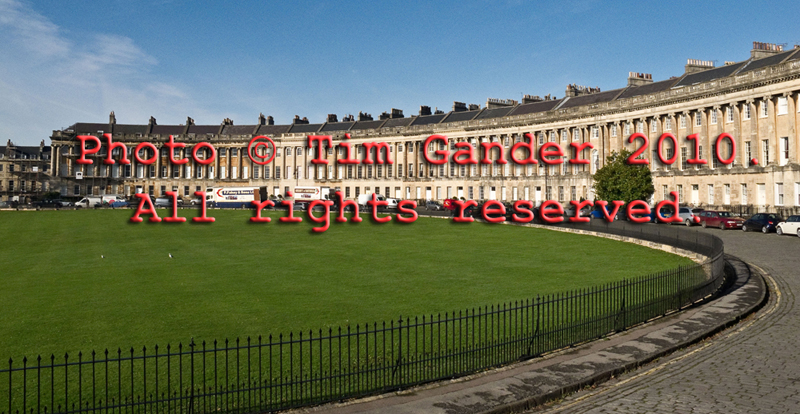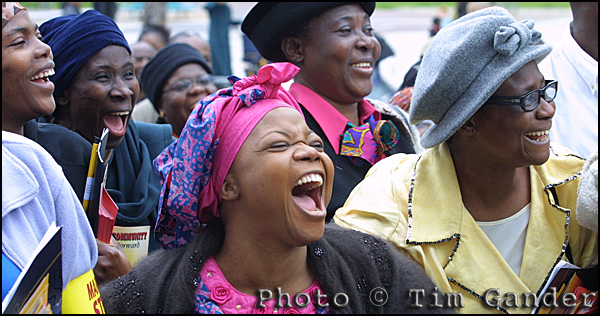If you’re on Twitter, you’ll know what I mean when I say that some new follows can be a little odd and surprising. Take my recently acquired new follower @BoycottGetty as an example.
At first glance I was hopeful that this was a new movement formed from designers disillusioned with the banality of stock imagery; a return to the values of using real images of real people for truly interesting design. URR! URR! WRONG!
It turns out @BoycottGetty is an anonymous twitterer with an equally opaque identity at an online petition hosting site (see Boycott Getty Images!) with a mission to get Getty Images to change their approach to dealing with people who, wittingly or otherwise, use Getty-managed photos without paying for them. Quite why they’d want to follow me, I can’t work out.
Boycott Getty Images (BGI) don’t like the current tactics used by Getty to chase copyright infringers because they feel they’re too belligerent. This may be so, and I’m no fan of Getty or its micro-payment subsidiary iStockphoto (anyone who has followed my blog for a while will know I don’t much like stock photography in general), but the alternative solutions suggested by BGI make no sense, unless one assumes that the person or people behind BGI have been caught using unlicensed Getty images and are a tad hacked off at being asked to pay up.
Let’s look at a summary of what BGI are demanding, then you’ll see what a nonsense his/her/their campaign is. From BGI’s petition website:
“This petition demands that Getty Images immediately cease its highly unethical extortion practice before another innocent US citizen is intentionally harmed, and announce the implementation of new copyright protection technologies & business practices that are consumer friendly, protect their photographers copyrights and benefit the general public at large.”
The petition sets out these points more fully on the site, but this is a pretty good precis of the thrust of their arguments, so let’s unpick what they’re saying here.
For one thing, I suspect the author of this petition decided to remain anonymous due to the “legally dancing on thin ice” nature of the opening sentence. Using phrases like “unethical extortion” and “intentionally harmed” strikes me as dangerous, considering how readily Getty likes to threaten legal action, but perhaps they’ll let this go as the angry ramblings of an irrelevant campaigner with an axe to grind.
The author mentions the “implementation of new copyright protection technologies,” but as of the writing of this blog article no such technologies exist, and even in the paragraph dedicated to this point the author doesn’t seem to know what these technologies might be. Furthermore any technologies that do exist are useless once a paying client has bought, unlocked and published a photo on their website. From thenceforth the photo is subject to the same copy and paste problems as any other image on the internet. Getty would still have to search out and demand redress for images used without payment.
BGI demands that Getty adopt business practices which are consumer friendly. Does that mean like making millions of photos available at penny prices for anyone who wants to legally buy them? Or are they seriously suggesting Getty should stop demanding payments from people who steal their assets?
And here’s a contradiction; BGI wants Getty to “protect their photographers copyrights.” They say they don’t know if the compensation moneys collected by Getty from infringers is shared with the photographers, but firstly I suspect it is and secondly it’s not any of BGI’s business. That’s between Getty and its contributors. What they actually call for is wider use of Take Down notices, which would mean photographers get nothing for the infringing use of their photos, except the hassle of having to deal with infringements. No protection there then.
This final point is quite strange: “benefit the general public at large.” Ignoring the tautology in that sentence, is Getty Images some kind of humanitarian organisation now? What other corporate giants should we demand general public (at large) benefits from? Microsoft? Walmart? The Zimbabwean government under Robert Mugabe? Dream on, Sunshine.
Although the Boycott Getty Images name seems misleading in that it doesn’t directly boycott the buying of Getty images (just their issuing of legal letters), the site is linked to www.zyra.info which is campaigning for people to avoid using Getty-licensed images altogether. I’d applaud this concept except that the alternative ideas put forward on that site are nuttier than squirrel shit.
So to @BoycottGetty, I say sorry, but I won’t be following you back. Your ideas make as much sense as a pocketful of baked beans, and this weakens your case considerably. You’re welcome to follow me though. You might learn something useful.






